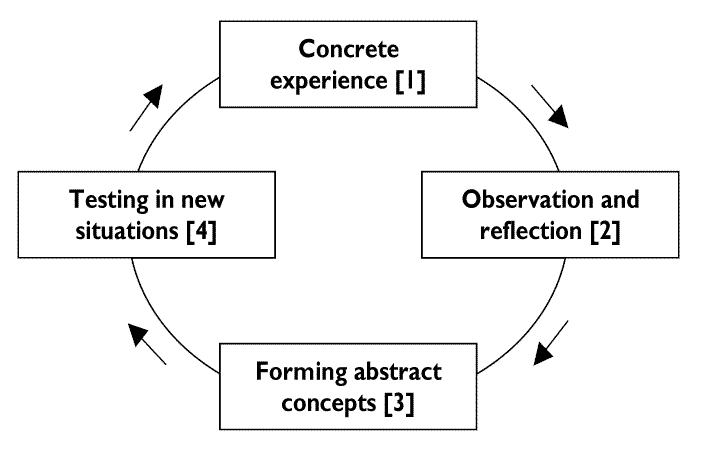Online Course
Nurs 791 - Instructional Strategies and Assessment
Module 7: Learner Intensive Strategies
Overview
“I never teach my pupils; I only attempt to provide the conditions
in which they can learn.”
Learner intensive strategies are those in which the learner is actively involved in the learning process. The purpose of these strategies is to bridge the gap from classroom learning to clinical practice by providing supervised learning in clinical environments. Learner intensive strategies can also be called experiential learning experiences. Experiential learning is defined as the direct encounter or experiences within an area of study. Kolb describes experiential learning in four events. The first is a concrete experience in which action occurs. The action results in effects and the effects provide information that can be used to form principles. The principles can be applied to similar but new circumstances in which possible effects can be anticipated.

David A. Kolb's Experiential Learning Circle
This module is the fifth and last in the series of modules that focus on instructional strategies. The instructional strategies in this module are called “learner intensive” because there is an increased component of student involvement in the learning process. The purpose of this module is to introduce the learner to four types of learner intensive strategies: clinical, preceptor, mentoring, and reflection.
Objectives
At the conclusion of this module, the learner will:
- compare and contrast five types of learner intensive strategies; and
- select a learner intensive strategy appropriate to a learning experience.
Required Readings
- Bradshaw, M.J. (2017) Philosophical Approaches to Clinical Instruction, Chapter 8,, pp. 311-317.
- Allen, S.S. and Prater, L.S. (2017) Crafting the Clinical Experience: A Toolbox for Healthcare Professionals, Chapter 21, pp. 319-348.
- French, B.M. and Greenspan, M. (2017). The Preceptred Clinical Experience. Chapter 22, pp.349-367.
- Passmore, G.G. (2017), Concept Mapping: A Meaningful Learning Tool to Promote Concepetual Understanding and Clinical Reasoning. Chapter 26, pp. 417- 437.
- In Bradshaw, M.J. and Lowenstein, A.J. (Eds.) (2014) Innovative teaching strategies in nursing and related health professions, Fifth Edition. Sudbury, MA: Jones and Bartlett Publishers. Chapters 23, 24, 25, 26.
- In Bradshaw, M.J. and Lowenstein, A.J. (Eds.) (2011) Innovative teaching strategies in nursing and related health professions, Fifth Edition. Sudbury, MA: Jones and Bartlett Publishers. Chapters 25,26,27,28.
OR
OR
Directions
Read the module and suggested readings within the module. Then complete the assignment for the module.
This website is maintained by the University of Maryland School of Nursing (UMSON) Office of Learning Technologies. The UMSON logo and all other contents of this website are the sole property of UMSON and may not be used for any purpose without prior written consent. Links to other websites do not constitute or imply an endorsement of those sites, their content, or their products and services. Please send comments, corrections, and link improvements to online@son.umaryland.edu.